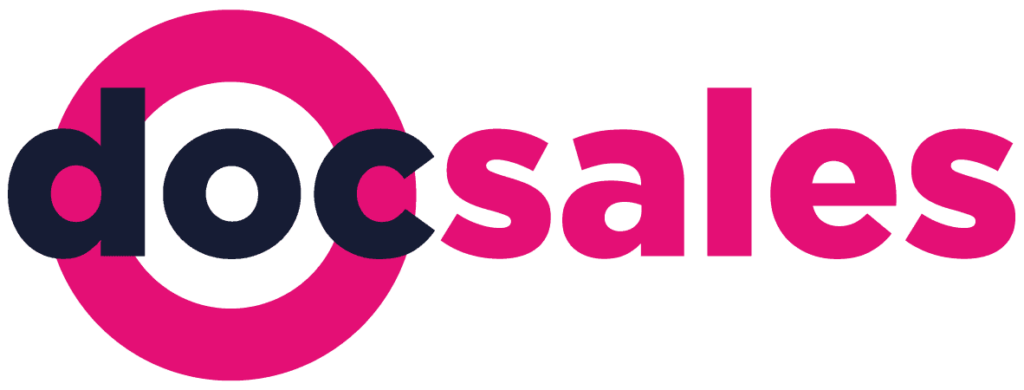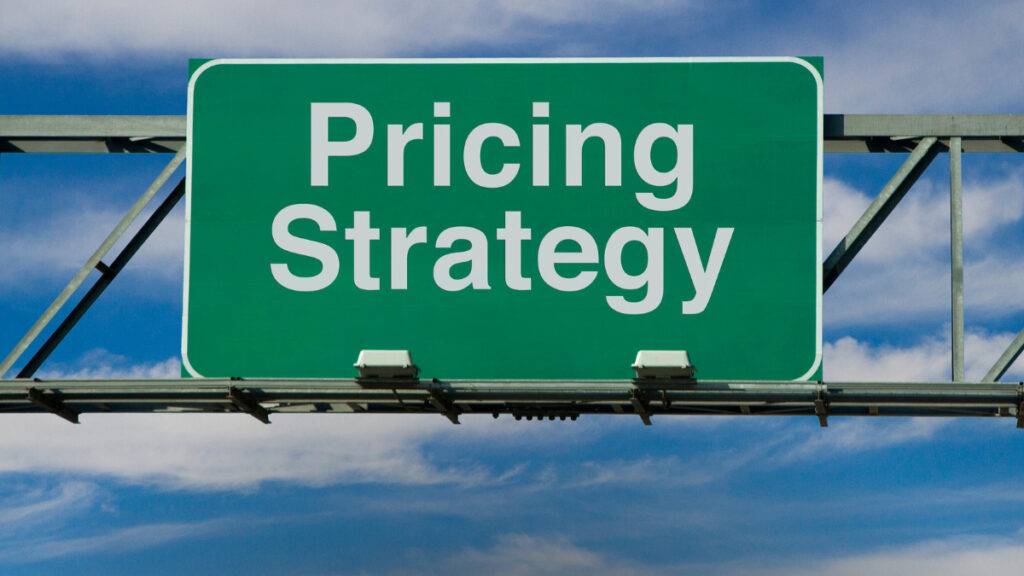Introduction
Sending thousands of business proposals is not synonymous with productivity. Often, we see decreased sales as a result of undefined processes, bad communication with customers and unstructured follow-up.
In a highly competitive scenario, optimizing sales is key to increasing revenue and reducing the flaws that cost the company. Want to know how to make your business team more productive and focus on the right activities?
Keep reading our e-book and find out how you can increase your company’s sales capacity!
1. Develop effective business proposals
Opening a new lead is a difficult task and often requires a lot of time and effort. Therefore, when it comes time to submit the business proposal, we need to be highly convincing and assertive in order for the sale to be successful.
Need some tips on how to do this? Follow us!
1.1. Organize information
The purpose of this article is to show you how to optimize sales, right? So we cannot waste time at the proposal stage since the delay in sending or presenting such an important document can cost new contracts for your company.
The first step, then, is to organize all the information necessary for the preparation of the proposal. Have a well-designed flow of documents, spreadsheets, and schedules so your team can raise costs and design the proposal quickly and correctly.
1.2. Prepare a template
Another key point to make business proposals agile and efficient is to set some standards for the sales team. Think about how to customize your proposals so that they are easily identified by customers, either on letterhead or in a presentation with the company logo.
With this, all documents will follow a standard and logical sequence, making it easy for salespeople to work together and customer understanding.
1.3. Identify the proposal
This may seem like an obvious tip, but many companies forget to identify the contractor and the service they are offering in the proposal, making it impossible for the client to understand what is proposed or even remember that he considered doing business with you.
So, at the beginning of the document, make it clear to whom it is intended, what service will be contracted and what forms of contact with your company.
1.4. Detail the scope of work
Scope is the timing of the proposal where all deliverables, deadlines and conditions must be detailed so that there is no surprise or frustration in the future.
It is also important to make clear to the customer what will be delivered and what expectations should be. That way, you prevent the proposal from being stopped because the concerns have not been answered or because the customer is not sure about what is being purchased.
1.5. Automate the process
Agility and efficiency are directly related to simple processes and the ease with which your team can generate, send, and control business proposals.
Therefore, there nothing better than automating this important stage of sales, leaving pre-established models, facilitating the completion of contracts and frequently accompanying the number of proposals sent and closed.
2. Learn how to handle objections in sales
Hardly a customer will sign a contract without questioning some point of the proposal or without negotiating values. However, knowing how to deal with objections without harming the relationship is critical to getting the negotiation going and improving your team’s performance.
2.1. Record customer information
Keeping an up-to-date and complete history on customer interactions is a great benefit you can use in favor of sales. When you and your team are aware of customer objections, their needs – and even complaints – interactions become much more agile and productive, increasing the potential for closing deals.
2.2. Hear more
The more your sales people know how to listen, the greater the chances of awakening the client’s empathy, understanding what they need, and therefore delivering exactly the solution they need.
2.3. Do not push the sale
No one can likes “bad” seller who says he owns the truth and does not pay attention to the client’s needs. The sales process should be similar to that of a consulting firm. So, gradually show the benefits of the services you offer and look for ways to prove to the client that you can make it easier for him or her.
2.4. Beware of unnecessary clashes
Think that you are initiating a relationship with a new person and therefore you should be careful not to scare her and keep her from moving away and never come back. When you notice that the customer has a incorrect understanding of the solutions you offer, instead of being aggressive and saying that he is wrong, try to get around the situation.
Demonstrate that you understand their point of view, but that there are other variables that need to be considered, present some success stories and show how you can help.
2.5. Track objections
How about keeping a history of the most frequent objections and classifying them according to importance and recurrence? This is a great way to prepare your sales force to look for new ways and data to prove that what your company really offers has the potential to deliver the results expected by the customer.
3. Learn how to use Spin Selling to your advantage
Ever heard of Spin Selling? The sales strategy presented by Neil Rackham is already quite old, but has revolutionized the way of selling by making the process much more agile and efficient.
The strategy is to make the sales cycle turn more objectively by making the customer see the benefits of the deal and not raise objections about what is being proposed.
The process is based on four steps:
Situation
The first step is to analyze the client, from his current financial situation, to the way he behaves and thinks. The more information you observe and collect, the easier it will be to close the sale.
Problems
Based on the above analysis, problems that may arise during the sale are identified. An example would be the client’s financial condition or any other factor that could generate a conflict and prevent or delay closing. It is important to note that every sales process implies problems – so not listing any problems is not a valid alternative.
Implications
Now is the time to analyze what consequences the problems raised earlier can generate. At this stage, you should start thinking about the attitudes that your team can take to circumvent or solve the implications.
Needs
At that point, the potential customer has already discovered that they have a problem and it’s time to show how your business can help you solve it and what the benefits of doing business with you will be.
3.1. How Spin Selling can help you
This may seem like a long and exhausting strategy, but Spin Selling helps prepare the sales force and choose words that makes sense to the customer and makes the whole process more agile.
It’s no use having an innovative solution if it does not make sense to the customer – or worse, if he does not see the advantages of using it. Therefore, knowing the needs facilitates the understanding of what the customer perceives as value and also helps find the decision maker in the company.
By applying Spin Selling to your sales team you can anticipate objections and choose language that engages the customer, making the process shorter and much more effective.
4. Find out how a sales pipeline can help your business.
The sales pipeline consists of identifying and structuring steps through which a lead passes until signing the contract and becoming a customer of your company.
With it, you can analyze customer data and understand how close your business team is to closing deals and what can be done so that the customer continues the purchase journey and signs the contract.
4.1. Sales pipeline in practice
Imagine that each sales step corresponds to a portion of a funnel. That way, the top comprises the widest part, where are all the potential customers that you can contact.
At that time, there is a need to plan and gather information about these customers that will be used later. In the middle of the funnel are customers who have been visited and for whom their team has made the commercial proposals.
Here, in addition to the development of the proposals, a survey of the needs of each client is also carried out. Lastly, the funnel base corresponds to the final stages of the sale – such as value negotiations and work scope alignment.
4.2. What the sales pipeline can do for your business
The sales pipeline is an excellent tool to visualize how the negotiations and the performance of your team work. With it, it is possible to understand the quantity and quality of business opportunities as well as the conversion rate.
You can still detect at what point in the buying journey customers tend to give up negotiations and which sellers can close more contracts. Finally, it is possible to analyze the average time a negotiation takes to bring a new customer to the company, generating valuable data to optimize the process and fix mistakes that can be costing a lot of money.
4.3. Sales Pipeline Vs. Forecasting
If you are thinking that you already use the sales pipeline as a business tool because you hold weekly meetings and are constantly questioning your team about the goals, the big flaw in the whole process is probably there.
Forecasting is a way to consult your team to get sense of deal flow, something very different from the pipeline. When we talk about sales pipeline, the big goal is to understand how the process works in your company and market and visualize opportunities to make it more effective.
Your team actively participates in fueling the strategy with information and suggesting ways to make the contact with the client more successful and with increased conversion potential. This is quite different from calling everyone in a room and putting pressure on numbers and low performance, do you agree?
5. Understand how to execute follow-up on sales
Now that your team is already putting together commercial killer proposals and you use the sales pipeline to understand the customer and make the process more efficient, it’s time to follow-up.
5.1. Keep an up-to-date history
It is worth emphasizing again the importance of keeping the information about the clients always updated and complete. Once you make a sale, feed the history with the details of the negotiations, the objections and the final agreement. This data will be very useful to exceed expectations and customer loyalty in the long term.
5.2. Create tasks and schedules
Just because a proposal was sent, doesn’t mean you can just sit back and expect a response from the client. Your sales team needs to collect feedback and establish a routine of calls and visits so that the deal does not go down.
5.3. Be agile
Agility can make a difference when signing up for a contract. Therefore, reinforce with your team the importance of responding to requests, returning calls and scheduling visits whenever a client requests.
5.4. Stay in touch
Once you return from a visit or submit a proposal, schedule a thank-you letter to the clients with the next steps and a summary of everything discussed. In addition to demonstrating professionalism, this kind of attitude keeps the contact active and the customer close.
5.5. Invest in a CRM
A management software is your great ally to organize all the information about the customer and create tasks and reminders for the sales team.
With a CRM, you can view the entire customer history and analyze the sales pipeline in just a few clicks, making the process much more responsive and efficient.
CRMs such as Pipedrive , Agendor , PlugCRM and Omie are integrated with DocSales.com
Conclusion
Optimizing the sales of your company is a constant process that demands a change of culture and investment in tools that allow to automate and make the steps faster. Remember that you have to take a different approach when dealing with the client and study their problems and needs in depth to prevent potential obstacles.
Start putting our tips into practice and see how your business team will begin to perform much better and be more engaging to suggest changes and visualize opportunities!
About Us |
The Commercial Proposals is software that facilitates the process of making and sending commercial proposals and contracts, from the simplest to the most complex.
The result of its adoption is more efficiency and agility for its processes, since it allows the time savings in the preparation of the proposals, greater control for the phase of proposals of the sales funnel and an effective analysis of its commercial impact.
Would you like to know more? Access our website and contact us.
Learn more about sales pipeline by clicking here.






